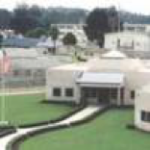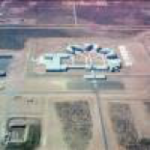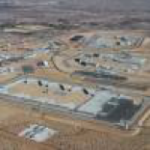Money on Books, work with the California Department of Corrections and Rehabilitation as well as with the multiple County jail facilities in Los Angeles, San Diego, Orange, Riverside, San Bernardino, etc.
State
California Department of Corrections and Rehabilitation
The California Department of Corrections and Rehabilitation’s (CDCR) Spring 2015 adult institution and parole population projections and the juvenile institution projections. These projections were developed in partnership with the University of California, Irvine using historical trend data and time series forecasting techniques. Notably, these projections incorporate the impact of Proposition 47, which was passed by voter initiative in November 2014 and allows only a misdemeanor sentence instead of a felony sentence for certain drug and property offenses, and allows for resentencing of persons serving felony sentences for those offenses. This new law has substantially impacted the adult institution and parole populations. Adult Institution Projections on June 30, 2015, the institution population is projected to be 130,380, a 3.8 percent decrease (5,104 inmates) from the actual population on June 30, 2014. The population is projected to continue to decrease gradually through June 30, 2016, when it is anticipated to reach 129,812 (a year-over-year decrease of 0.4 percent).i ii However, because a longer-term increase is expected in commitments from court, the projected population is anticipated to increase in each of the next three years to 132,467 on June 30, 2019. This increase could, however, be slowed by recent changes, such as two court-ordered population reduction measures including a new parole determination process for eligible non-violent second strike offenders and prospective credit-earning changes for certain minimum custody offenders. Given the magnitude of recent changes ordered by the federal court and implemented by the Department, and the potential for unknown future changes to the correctional system, projections beyond a two-year horizon should be interpreted with caution. The Spring 2015 projected population is 5,931 inmates lower (4.4 percent) than the number projected last Fall for June 30, 2015 and 7,711 inmates lower (5.6 percent) for June 30, 2016. The difference between these projections is largely driven by the impact of Proposition 47, which is factored into the Spring 2015 Population Projections, but was not in the Fall. The Proposition 47-related impact on the institution population is the result of a combination of two factors: 1) inmates who released from prison based on their resentencing, and 2) inmates whose convictions were no longer deemed prison-eligible following the passage of Proposition 47 (avoided court commitments). While most of the impact of resentencing is expected to be complete by roughly June 2016, the impact of avoided court commitments is assumed to continue indefinitely. Another difference between the Spring and Fall projections can be Spring 2015 Population Projections v attributed to the court-ordered change in credit earning for certain non-violent second strikers (change from 20 percent to 33.3 percent). Although the initial impact of this change was factored into the Fall projections, the Spring 2015 projections incorporate more trend data, which has resulted in a larger projected impact. Felon commitments to prison for Proposition 47-related offenses have started to decline since the initiative’s passage in November 2014 and, for projections purposes, this decline is assumed to continue indefinitely. However, only 13 weeks of Proposition 47 data were available at the time these projections were produced, and given the volatility of admissions since its passage, and the potential for changes to charging behavior by prosecutors, the long-term impact of avoided court commitments is not certain at this juncture. Furthermore, it appears that Proposition 47 may also be impacting second-strike court commitments, which had been increasing following the implementation of Realignment in October 2011, and are now projected to decrease 12.5 percent (a decrease of 1,300 second strike commitments) from fiscal year (FY) 2013-14 to FY 2014-15, and to decrease 5.4 percent from FY 2014-15 to FY 2015-16 (a decrease of 486 second strike commitments). The increase in second-strike court commitments that occurred after the passage of Realignment had included a high proportion of offenders with current non-serious, non-violent offenses. Therefore, it is possible that Proposition 47 is reducing second-strike commitments by converting felonies that had previously been sentenced as second-strike offenses into misdemeanor offenses. It is important to highlight that projected second strike commitments for FYs 2014-15 and 2015- 16—although decreasing and lower than expected in Fall 2014—remain higher than pre-Realignment levels. Additionally, the impact of Proposition 47 on the institution population may be lessened by other court-ordered measured that potentially affect the same target population, such as the aforementioned parole determination process for non-violent second strike offenders. iii Additional analysis is needed to determine the effects of such intersections. Moreover, CDCR researchers will carefully monitor observed court commitment reductions to determine if they are sustained over time as well as look for emerging trends such as offsets in commitments in other categories.
As of April 8, 2015, 111,863 inmates were housed in the State’s 34 adult institutions, which amounts to 135.3% of design bed capacity, and 8,394 inmates were housed in out-of-state facilities.
According to the Department’s official Web site, “Currently there are 33 adult correctional institutions, 13 adult community correctional facilities, and eight juvenile facilities in California that house more than 165,000 adult offenders and nearly 3,200 juvenile offenders.” This inmate population makes the CDCR the largest state-run prison system in the United States.
CDC Institutional Addresses
- Avenal State Prison (ASP) #1 Kings Way Avenal, CA 93204 (559) 386-0587 P. O. Box 8 Avenal, CA 93204
- California City Correctional Facility (CAC) 22844 Virginia Blvd. California City, CA 93505 (760)246-7600 P.O. Box 2626 California City, CA 93505
- California Correctional Center (CCC) 711-045 Center Rd. Susanville, CA 96127-0790 (530) 257-2181 P.O. Box 790 Susanville, CA 96127-0790
- California Correctional Institution (CCI) 24900 Highway 202 Tehachapi, CA 93561 (661) 822-4402 P. O. Box 1031 Tehachapi, CA 93581
- California Health Care Facility, Stockton California Health Care Facility 7707 Austin Road Stockton, CA 95215 (209) 467-2500 California Heath Care Facility P.O. Box 32050 Stockton, Ca. 95213
- California Institution for Men (CIM) 14901 Central Avenue Chino, CA 91710 (909) 597-1821 P.O. Box 128 Chino, CA 91708
- California Institution for Women (CIW) 16756 Chino-Corona Road Corona, CA 92880 (909) 597-1771 P. O. Box 6000 Corona, CA 92878
- California Men’s Colony (CMC) Highway 1 San Luis Obispo, CA 93409 (805) 547-7900 P.O. Box 8101 San Luis Obispo, CA 93409-8101
- California Medical Facility (CMF) 1600 California Dr. Vacaville, CA 95696 (707) 448-6841 P. O. Box 2000 Vacaville, CA 95696-2000
- California Rehabilitation Center (CRC) 5th Street & Western Norco, CA 92860 (951) 737-2683 P.O. Box 1841 Norco, CA 92860-0991
- California State Prison, Corcoran (COR) 4001 King Avenue Corcoran, CA 93212 (559) 992-8800 P.O. Box 8800 Corcoran, CA 93212-8309
- California State Prison, Los Angeles County (LAC) 44750 60th Street West Lancaster, CA 93536-7620 (661) 729-2000
- California State Prison, Sacramento (SAC) 100 Prison Road Represa, CA 95671 (916) 985-8610 P.O. Box 290002 Represa, CA 95671
- California Department of Corrections and Rehabilitation Adult Institutions California State Prison, Solano (SOL) 2100 Peabody Road Vacaville, CA 95696 (707) 451-0182 P. O. Box 4000 Vacaville, CA 95696-4000
- California Substance Abuse Treatment Facility and State Prison, Corcoran (SATF-CSP, Corcoran) 900 Quebec Avenue Corcoran, CA 93212 (559) 992-7100 P. O. Box 7100 Corcoran, CA 93212
- Calipatria State Prison (CAL) 7018 Blair Road Calipatria, CA 92233 (760) 348-7000 P.O. Box 5001 Calipatria, CA 92233-5001
- California State Prison, Centinela (CEN) 2302 Brown Road Imperial, CA 92251 (760) 337-7900 P.O. Box 731 Imperial, CA 92251-0731
- Central California Women’s Facility (CCWF) 23370 Road 22 Chowchilla, CA 93610 (559) 665-5531 P. O. Box 1501 Chowchilla, CA 93610-1501
- Chuckawalla Valley State Prison (CVSP) 19025 Wiley’s Well Rd. Blythe, CA 92225 (760) 922-5300 P.O. Box 2289 Blythe, CA 92226
- Correctional Training Facility (CTF) Highway 101 North * Soledad, CA 93960 (831) 678-3951 P.O. Box 686 Soledad, CA 93960-0686
- Deuel Vocational Institution (DVI) 23500 Kasson Road Tracy, CA 95376 (209) 835-4141 P.O. Box 400 Tracy, CA 95378-0004
- Folsom State Prison (FSP) 300 Prison Road Represa, CA 95671 (916) 985-2561 P.O. Box 71 Represa, CA 95671
- High Desert State Prison (HDSP) 475-750 Rice Canyon Rd. Susanville, CA 96127 (530) 251-5100 P.O. Box 750 Susanville, CA 96127-0750
- Ironwood State Prison (ISP) 19005 Wiley’s Well Road Blythe, CA 92225 (760) 921-3000 P.O. Box 2229 Blythe, CA 92226
- Kern Valley State Prison (KVSP) 3000 West Cecil Avenue Delano, CA 93216-6000 (661) 721-6300 P.O. Box 6000 Delano, CA 93216-6000
- Mule Creek State Prison (MCSP) 4001 Highway 104 Ione, CA 95640 (209) 274-4911 P.O. Box 409099 Ione, CA 95640
- North Kern State Prison (NKSP) 2737 West Cecil Avenue Delano, CA 93215 (661) 721-2345 (General) P.O. Box 567 Delano, CA 93216-0567
- Pelican Bay State Prison (PBSP) 5905 Lake Earl Drive Crescent City, CA 95531 (707) 465-1000 P.O. Box 7000 Crescent City, CA 95531-7000
- Pleasant Valley State Prison (PVSP) 24863 West Jayne Avenue Coalinga, CA 93210 (559) 935-4900 P.O. Box 8500 Coalinga, CA 93210
- Richard J. Donovan Correctional Facility (RJD) 480 Alta Road San Diego, CA 92179 (619) 661-6500
- Salinas Valley State Prison (SVSP) 31625 Highway 101 Soledad, CA 93960 (831) 678-5500 P. O. Box 1020 Soledad, CA 93960-1020 S
- San Quentin State Prison (SQ) San Quentin, CA 94964 (415) 454-1460 San Quentin State Prison San Quentin, CA 94974
- Sierra Conservation Center (SCC) 5100 O’Byrnes Ferry Road Jamestown, CA 95327 (209) 984-5291 P. O. Box 497 Jamestown, CA 95327
- Valley State Prison (VSP) 21633 Avenue 24 Chowchilla, CA 93610 (559) 665-6100 P. O. Box 92 Chowchilla, CA 93610-0099
Wasco State Prison-Reception Center (WSP) 701 Scofield Avenue Wasco, CA 93280 (661) 758-8400 P.O. Box 8800 Wasco, CA 93280-8800
County
Los Angeles County Sheriff’s Department
The Los Angeles County Sheriff’s Department operates one of the largest jail systems in the world The Men’s Central Jail has an inmate bed capacity of 5,640 inmates. It houses inmates of all security levels, from general population to high security inmates. Men’s Central Jail also has medical housing areas, which are used for diabetic inmates requiring daily medical care, and inmates who require assistance from wheel chairs or crutches.
Mira Loma Detention Center is currently under contract with the Bureau of Immigration and Customs Enforcement to house federal detainees facing deportation. As of January 2008, Mira Loma has a bed capacity of 1,116 male detainees.
North County Correctional Facility is a maximum-security complex consisting of five housing pods within one facility, with an inmate bed capacity of 4,295 inmates. NCCF is part of the Pitchess Detention Center Facilities.
East Facility is a medium security complex with a 1,944-inmate bed capacity. It is located on the Pitchess Detention Center property and has 14 dormitories and two discipline modules.
North Facility is a maximum-security complex with four modules and an inmate bed capacity of 1,648 inmates.
South Facility is a medium security compound which houses sentenced low and medium inmates, kitchen, and laundry crews, and has an inmate bed capacity of 1,536 inmates. South Facility is also the location of several inmate programs; including, Bridges to Recovery, IMPACT, and the Merit program.
Orange County Sheriff’s Department
The Central Men’s and Central Women’s Jail opened in November of 1968 and are traditional linear style (cell block and dormitory) facilities which house both sentenced and pre-trial maximum security inmates. The Central Men’s Jail houses 1433 inmates and Central Women’s Jail houses 380 inmates.
The James A. Musick Facility provides custodial and rehabilitative programs for 1,322 adult male and female inmates and ICE detainees. Educational programs are available which enable the inmates to receive a G.E.D. while incarcerated. In addition, educational classes are offered in subjects such as; parenting, substance abuse, math, and government. Vocational Classes that are offered at the facility includes; Sewing, Cabinetry, Welding, Workforce Readiness, and Food Preparation. The laundry facility at Musick also serves the Theo Lacy facility as well as Orange County Juvenile Hall in addition to the laundry needs for the Musick facility
The Theo Lacy Facility is a maximum-security jail complex situated on the banks of the Santa Ana River bed in the City of Orange. The facility covers approximately 11 acres of land between the Orangewood Group home boys’s Home and the Orange County Animal Shelter. With a maximum capacity of 3,442 inmates, the Theo Lacy Facility maintains the custody and welfare over a diverse inmate population ranging from those charged or sentenced for misdemeanor crimes to more serious felonies. Others have been sentenced and are awaiting transfer to State Prison.
In August 2010, the Orange County Sheriff’s Department (OCSD) entered into a contract with the U.S. Department of Homeland Security (DHS), Immigration and Customs Enforcement (ICE) to house immigration detainees in our facilities. The five-year contract makes a maximum of 838 beds available to ICE’s Enforcement and Removal Operations (ERO).
OCSD provides for the detainees’ care and custody while ICE handles all aspects of the detainees’ immigration proceedings. OCSD provides housing and supports for detainees in accordance with the 2008 Performance Based National Detention Standards (PBNDS). ICE developed these standards to provide consistent conditions of confinement for immigration detainees across the country. ICE continually monitors our compliance with PBNDS. In addition, ICE contracts with an independent compliance inspection company to conduct annual inspections and reviews of each facility.
The OCSD ICE Detention Program is managed by a Sheriff’s Lieutenant, under the direction of the Commander of Custody and Court Operations Command. In partnership with ICE, the ICE lieutenant, and a staff of three sergeants, an administrative manager, and three deputy sheriffs oversee detention operations and compliance across four of the Sheriff’s custody facilities.
The Central Women’s Jail (CWJ) and the Intake Release Center (IRC) can house detainees for up to 72 hours. These facilities temporarily house detainees who require a higher level of medical or mental health care and observation than is available at our other facilities. In addition, OCSD initially receives all detainees at the IRC.
The James A. Musick Facility (JAMF) can house 256 male and 110 female minimum security detainees. The Theo Lacy Facility (TLF) can house 408 minimum security and 64 medium or maximum security male detainees. These facilities can house the detainees for the entire length of their immigration proceedings. The average ICE detainee stay in OCSD custody is approximately 60 days.
Riverside County Sheriff’s Department
There are five jails, or correctional facilities, in Riverside County, all managed by the Sheriff’s Department Corrections Division, one of the largest jail operations in the state and throughout the country.
- Robert Presley Detention Center (RPDC)
Located in the downtown area of Riverside, California, the Robert Presley Detention Center was opened in 1989 replacing the old Riverside County Jail. RPDC and the Hospital Security Unit at Riverside County Regional Medical Center are under the command of a Sheriff’s Captain and are administered under the direction of the Corrections Division Chief Deputy. - Southwest Detention Center
Opened in 1993, the Southwest Detention Center is in the southwest portion of Riverside County, adjacent to the cities of Temecula and Murrieta, in an area known as French Valley. The facility is under the command of a Sheriff’s Captain and administered under the direction of the Corrections Division Chief Deputy. - Larry D. Smith Correctional Facility
Located in the city of Banning, the Smith Correctional Facility is the Department’s largest correctional facility. The facility holds inmates as they await arraignment, hearings, trials, and sentencing, as well as inmates who have been sentenced to serve a county jail sentence. The facility is also home to several Corrections Division programs such as the Supervised Electronic Confinement Program, Work Release Program, Residential Substance Abuse Treatment program, Sheriff’s Inmate Training and Education Bureau, a commercial printing shop, centralized warehouse and laundry supports, as well as other counseling, vocational, and educational programs. The facility is under the command of a Sheriff’s Captain and is administrated under the direction of the Corrections Division Chief Deputy. - Indio Jail
Located in the City of Indio, the Indio Jail serves the Coachella Valley which has experienced rapid growth over the past two decades. The facility is under the command of a shared Sheriff’s Captain and is administered under the direction of the Corrections Division Chief Deputy.
Blythe Jail
Built in 1964, the Blythe Jail is administered under the direction of a shared Captain and the Corrections Division Chief Deputy.
San Bernardino County Sheriff’s Department
In January 2006, we opened the High Desert Detention Center to add much needed space to the Bureau of Detention and Corrections. The High Desert Detention Center is the first Type II facility to be located in the High Desert and provides safe and secure housing for over 700 inmates.
Originally opened in 1971, Central Detention Center (CDC) served as the main county jail for 20 years. Overcrowding issues in the 1980s resulted in the county building West Valley Detention Center in 1991. Central Jail (as it was known then) closed for a few years due to budgetary constraints. It reopened in 1994 when the Sheriff negotiated a contract with the U.S. Marshal’s Support to house federal prisoners.
For the past 10 years CDC has been the primary booking facility for the police and sheriff stations operating in the east valley area. During that time CDC has housed up to 850 federal inmates daily. Currently we house around 330 federal inmates and around 600 county inmates. We booked over 20,000 inmates during the past 12 months.
The Marshal’s Support utilizes C.D.C. as a West Coast Hub for the transportation and housing of federal inmates. They arrive and leave daily from locations throughout the U.S. and the Pacific Rim Islands. A Federal Grant and revenues from the contract have allowed us to retrofit and make numerous upgrades. We have added new paint, furniture, metal detectors, a new security camera system, and a complete remodel of the kitchen.
The Glen Helen Rehabilitation Center lies on 9 acres of land and consists of three inmate-housing facilities under the command of Captain Nina Jamsen. Glen Helen is San Bernardino County ‘s primary facility for housing both male and female inmates sentenced to County commitments.
The Male Facility opened in 1960 as a work camp and had a capacity of 100 inmates in a maximum housing unit. The original site was also used as the Sheriff’s Basic Academy until many years later when the training center was moved to the property just north of the jail. The current facility has two Minimum Security Housing Units and a Maximum-Security Housing Unit. Glen Helen has a maximum capacity of 1024 inmates and averages a daily population of 1020.
Plans are currently in development for two additional housing units that will house nearly 500 pre-trial and sentenced county inmates.
Glen Helen’s Female Facility originally opened in 1988 with three dorm units for the housing of county sentenced inmates. An additional Maximum Security Unit was added in 2003 and the complex now houses both pre-trial and sentenced females. The Female Facility has the capacity to house 326 inmates and averages an inmate population of 240 inmates per day.
Working in conjunction with the courts and the Judicial Council, San Bernardino County ‘s Work Release program has been modified to allow more sentenced inmates to qualify for the program. Qualifying in-custody inmates can take specified classes while incarcerated at Glen Helen and, upon completion, may qualify for ‘Work Release’. Under the direction of the court, the inmate can be released before his maximum sentence has been completed in order to reestablish ties with their family. In this way, the individual can return to their former employment and serve the community on their non-scheduled workdays.
The Inmate Supports Unit (ISU) is also located at the Glen Helen site. ISU provides supports for over 5,000 inmates housed in San Bernardino County ‘s four primary custody facilities and five outlying jails. ISU provides over 25 classes for inmates including Anger Management, Substance Abuse, “INROADS” (Inmate Rehabilitation Through Occupational and Academic Development), and vocational classes such as GED (General Education Diploma), Auto Body, Landscaping, Print Shop, and Commercial Baking. ISU employs 22 teachers through contracts with local schools.
The West Valley Detention Center (WVDC) was opened in 1991 and is one of the largest county jails in the State of California. With a bed capacity of 3,347, WVDC completes 50,000 to 60,000 bookings and releases each year. The facility provides medical, dental and mental health supports and facilitates worship supports to various denominations. The WVDC also provides a full range of inmate instruction programs in the fields of culinary arts, laundry supports and landscape maintenance.
San Diego County Sheriff’s Department
The San Diego County Sheriff’s Department operates seven detention facilities. Male arrestees are booked at the San Diego Central Jail and Vista Detention Facility, while female arrestees are booked at the Las Colinas and Vista Detention Facilities. The remaining jails house inmates in the care of the Sheriff.
To provide critical supports to a daily inmate population over 5,000, the Detention Supports Bureau is supported by a state-of-the-art food supports production center, comprehensive medical supports, laundry, commissary, and inmate processing supports. The Inmate Supports Division provides several educational and rehabilitative programs aimed at improving the reentry success of those returning to our communities.
The East Mesa Reentry Facility (EMRF) was initially built as a probation camp in conjunction with the George F. Bailey Detention Facility. It was turned over to the San Diego County Sheriff’s Department in 1991.
EMRF is a Type II medium security facility. It has a Board of State and Community Corrections (BSCC) rated capacity of 360 beds and currently has over 500 available beds. Laundry and food production for EMRF and other facilities is coordinated with the use of inmate workers at the facility through the department’s growing Inmate Industries Program. The Inmate Industry Program also includes print-shop skills, janitorial supports, computer graphics and construction trades.
Detention Facility 8 is a medium security facility built in conjunction with the George F. Bailey Detention Facility (GBDF) in 1991 and is the mirror image of the cell housing units found at GBDF. Between 1991 and 2006, the County of San Diego leased the unit and associated land to first the Wackenhut Corporation and then to the Corrections Corporation of America (CCA). On June 1st 2006, by contractual agreement, the original housing unit was returned to the County of San Diego and renovations to bring it up to standards immediately began. Facility 8 contains three housing modules; two modules with 34 triple occupancy cells and one with 32 triple occupancy cells for a total of 300 beds. Although Facility 8 is designed as a maximum-security jail, only inmates classified as low-medium security are housed here.
GBDF is a maximum-security facility and the largest of all the facilities operated under the San Diego County Sheriff’s jurisdiction. Construction of the facility was completed in 1991. The facility was opened for limited operation in 1993 and was fully operational in 1994.
The facility design includes six housing units, a medical area, an inmate processing area, and an administrative area. Located in the administrative area are the Detentions Processing Unit, Operational Support Unit, and the Facility Command staff.
Staffing levels include sworn and professional staff in both operational and support roles. They are comprised of Food Supports, Religious Supports, Medical Supports, Counseling Supports, Laundry and Supply Supports, Administrative Support Supports, Detention Processing Supports, and Maintenance Support.
The Board of State and Community Corrections (BSCC) rated capacity is 1,380 inmates. It houses a very diverse population of inmates, some with special housing needs. Currently, the facility houses three units of distinct special management inmates.
Located in Santee, the Las Colinas Detention and Reentry Facility (LCDRF) serves as the primary point of intake for women prisoners in San Diego County.
The facility opened in August 2014, replacing the old Las Colinas Detention Facility. That facility was built in 1967 and operated for a period of time as a juvenile facility before becoming a women’s facility in 1979. The new facility is staffed by approximately 278 sworn employees and 143 professional staff members. With the new facility comes the implementation of new operational philosophies.
Located in the City of Chula Vista, the South Bay Detention Facility (SBDF) is situated four stories beneath the South Bay Regional Justice Center and opened for support to the community in 1982. It is a non-booking facility consisting of two detention levels.
SBDF has a Board of State and Community Corrections (BSCC) rated capacity of 386 inmates, consisting both high and low-level inmate classifications.
The San Diego Central Jail (SDCJ) serves as the primary point of intake for male prisoners in San Diego County. Approximately 69,000 new bookings are initiated at SDCJ annually.
The facility is staffed by just over 200 sworn employees and nearly 200 professional staff members.
SDCJ opened in May 1998. The state-of-the-art facility makes extensive use of touch-screen controls and video surveillance. At the heart of the facility is the Central Command Center, which has the capability of electronically controlling all jail operations in the event of an emergency or major system failure.
SDCJ is 230 feet tall, making it the tallest construction project ever undertaken by the County of San Diego. It consists of 11 floors with a total of 17 levels counting the mezzanines and basement. The building provides a pleasing aesthetic addition to the downtown San Diego skyline, having been awarded multiple “orchids” for architectural design, interior design, and lighting design. The Board of State and Community Corrections (BSCC) rated capacity is 944 beds.
The population at SDCJ consists primarily of special handling inmates, newly booked inmates awaiting transfer to other facilities and pre-arraignment inmates. The special handling inmates consist of those with serious medical challenges, those under psychiatric care, inmates representing themselves in court, as well as defendants facing high-publicity trials.
SDCJ provides a wide range of medical and psychiatric supports, including on-site dialysis, infectious disease control, and dental care. Supports are provided by physicians, psychiatrists, dentists, nurses, and clinical social workers. SDCJ’s Psychiatric Security Unit is the largest acute psychiatric treatment facility in San Diego County.
The Vista Detention Facility (VDF) is classified as a Type II Facility by the Board of State and Community Corrections (BSCC). VDF serves as the primary point of intake for male and female arrestees in northern San Diego County.
Opened in 1978, VDF sits on several acres of developed land which is owned and operated by the County of San Diego. The facility has been remodeled twice. In 1989, VDF expanded an additional 576 beds, bringing its total to 886. The current BSCC rated capacity is 825 beds. VDF is just one building in the massive North County Regional Center complex (NCRC). Other buildings include the North County Superior Courts, Vista Sheriff’s Station, and the North County Law Library. All buildings apart from the Law Library are physically connected.
The population at VDF consists primarily of inmates awaiting court proceedings for North County cases. Our special handling inmate population consists of those with medical challenges, those under psychiatric care, an administrative segregation unit, as well as defendants facing high-publicity trials.
Federal
- Federal Correctional Institution, Victorville
- Federal Correctional Institution, Dublin California, USA
- Federal Correctional Institution, Mendota
- Federal Correctional Institution, Lompoc California, USA
- Federal Correctional Institution, Herlong Herlong, California, USA
- Federal Correctional Institution, Terminal Island Terminal Island, Los Angeles, California
- Metropolitan Correctional Center, San Diego
- Metropolitan Detention Center, Los Angeles
- United States Penitentiary, Atwater California, USA
- United States Penitentiary, Lompoc
- United States Penitentiary, Victorville Victorville, California, USA












